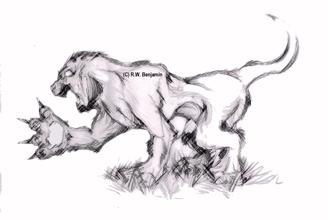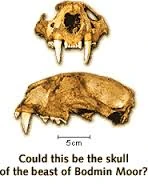
An Artist Drawing about Beast of Bodmin Moor
The Beast of Bodmin, also known as the Beast of Bodmin Moor, is a phantom wild cat purported to live in Cornwall, United Kingdom. Bodmin Moor became a center of these sightings with occasional reports of mutilated slain livestock. The alleged panther-like cats of the same region came to be popularly known as the Beast of Bodmin Moor.
The creature is panther-like, black furred, and it stalks around Bodmin Moor in Cornwall, England, killing livestock. It's supposedly a phantom, because big cats shouldn't be on England's moors.
A long held hypothesis suggests the possibility that alien big cats at large in the United Kingdom could have been imported as part of private collections or zoos, and later escaped or been set free. An escaped big cat would not be reported to the authorities due to the illegality of owning and importing the animals.
The Ministry of Agriculture, Fisheries and Food conducted an official investigation in 1995. The study found that there was "no verifiable evidence" of exotic felines loose in Britain, and that the mauled farm animals could have been attacked by common indigenous species. The report stated that "the investigation could not prove that a 'big cat' is not present."
Less than a week after the government report, a boy was walking by the River Fowey when he discovered a large cat skull. Measuring about 4 inches (10 cm) long by 7 inches (18 cm) wide, the skull was lacking its lower jaw but possessed two sharp, prominent canines that suggested that it might have belonged to a leopard. The story hit the national press at about the same time as the official denial of alien big cat evidence on Bodmin Moor.

Skull
The skull was sent to the Natural History Museum in London for verification. They determined that it was a genuine skull from a young male leopard, but also found that the cat had not died in Britain and that the skull had been imported as part of a leopard-skin rug. The back of the skull was cleanly cut off in a way that is commonly used to mount the head on a rug.
There was an egg case inside the skull that had been laid by a tropical cockroach that could not possibly be found in Britain. There were also cut marks on the skull indicating that the flesh had been scraped off with a knife, and the skull had begun to decompose only after a recent submersion in water.
